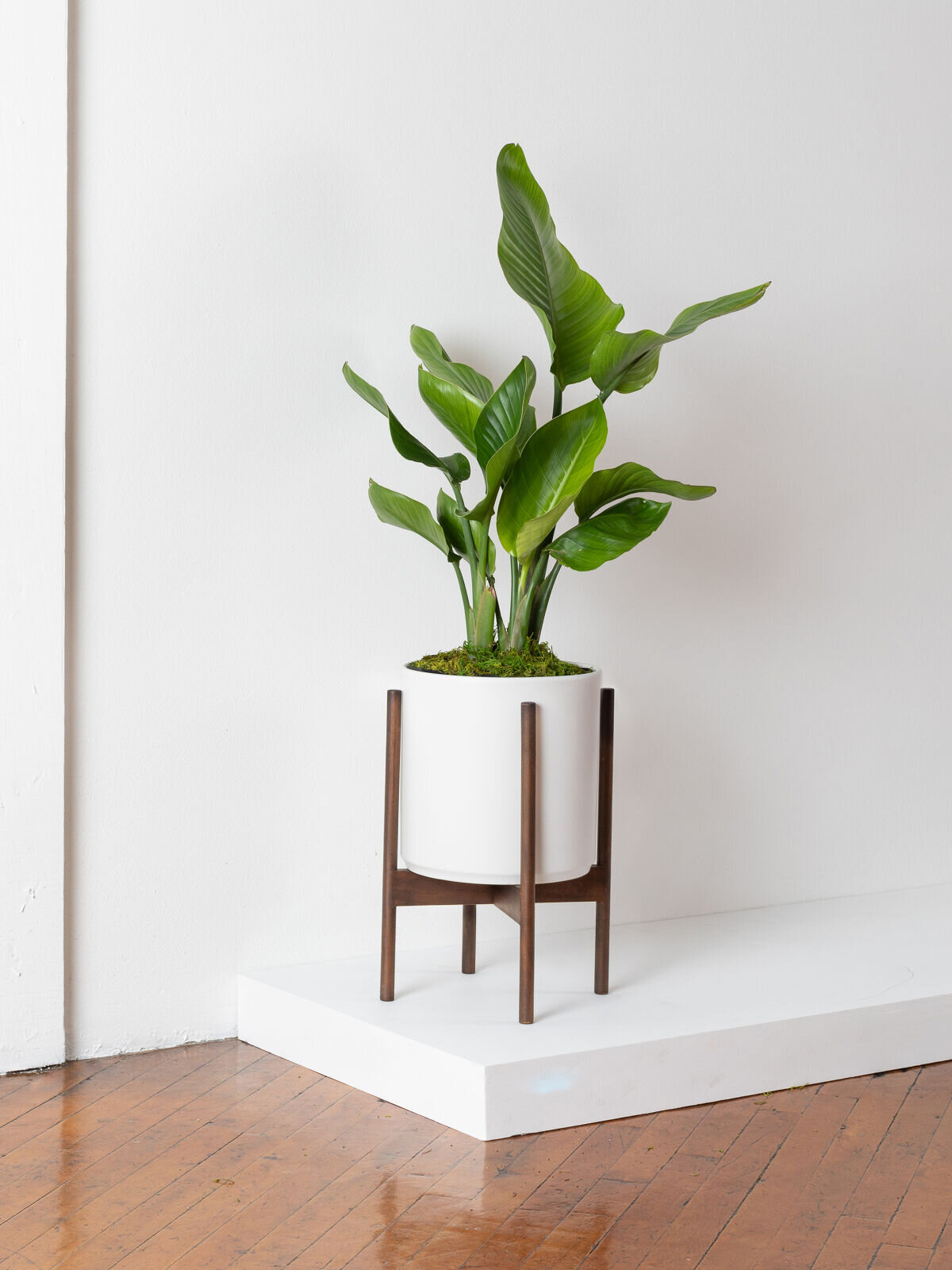We adore the The Bird of Paradise. Easy-care, verdantly green and gorgeous, this plant variety is a stunner for rooms that receive plenty of bright, direct light, and it requires water only sparingly. The foliage on this plant is naturally frayed and wild, but signs of discoloration like yellowing and browning are less standard. We know that seeing any discoloration on your plant friend’s leaves can be disconcerting, so read on to get to the bottom of the most common causes-- and their solutions!
Yellowing, Wilted Leaves
Usually, when the Bird of Paradise exhibits yellowing, wilted leaves (think floppy, not firm) it’s a sign that the plant is being overwatered. This is easily resolved! Just remove the plant from its ceramic pot, while keeping it secure in its plastic nursery pot. Check out the soil base. If it’s sopping wet, you may want to check the Bird of Paradise’s roots for root rot, which may require repotting (check out how to repot your Bird of Paradise here). But if the soil is simply wet or moistened through, you can simply allow the plant to dry out for a few days before returning it to its ceramic pot. If necessary, you can trim off any badly affected leaves and stems at their base with clean, sharp shears or scissors.
Browning Edges on Leaves
Crispy, dry brown edges are a common sign of dryness and/or underwatering. The Bird of Paradise does not like to be overwatered, but it does appreciated humidity, and if it is located close to an air vent, heater, A.C. unit or similar, this may be why it’s experiencing dryness. If it is close to an appliance, you should consider moving it. Make sure that you are watering the Bird of Paradise sufficiently, and mist it liberally, either with plain water, or with a mix of water and a gentle Foliar Feed, like Potion Magique. When using Potion Magique, it should be diluted to approximately three drops per every eight ounces of water.
Still Concerned? We’re Here to Help!
You never have to go it alone if you’re concerned with the health of your plant. If you follow the steps above and notice that your Bird of Paradise is not improving, our Plant Doctor service is here to help guide you with custom advice and solutions. Simply reach out to the via your Leon and George account, including illustrative photos and a description of any issues you’re seeing.
Bird of Paradise
Verdant, playful and charmingly low-maintenance, the Bird of Paradise is ideal for bright, sunny spaces.



